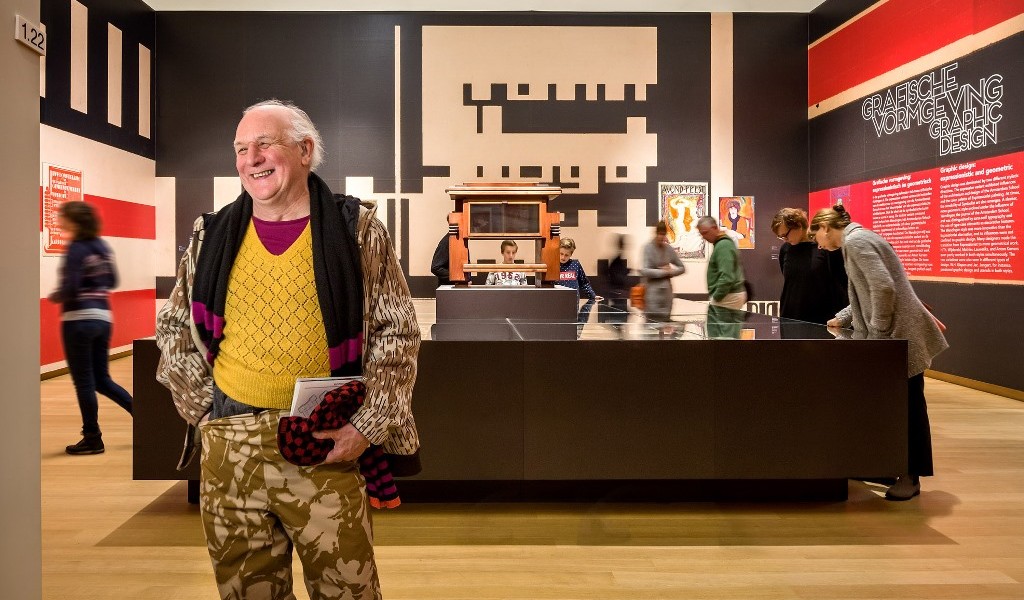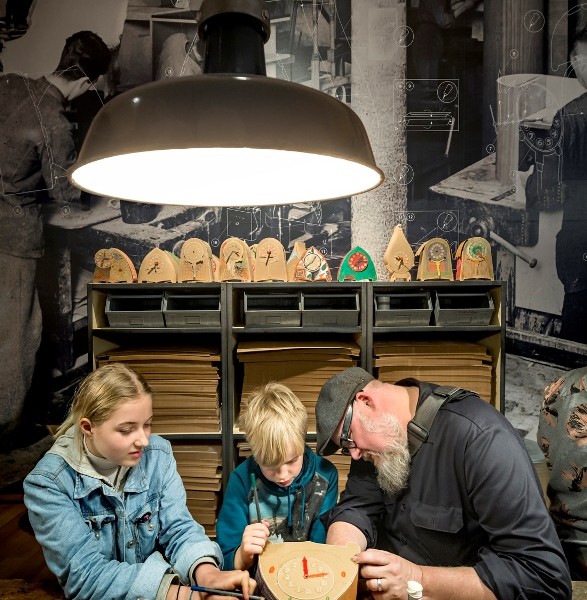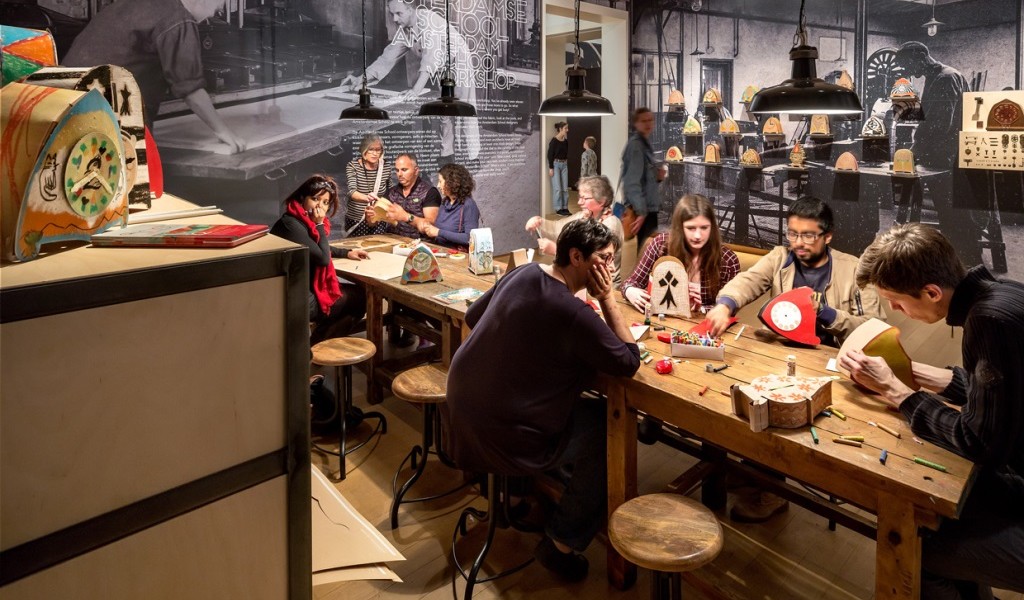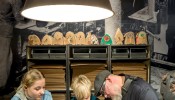Designing for the interior 1910-1930 for Stedelijk Museum’s current exhibition Living in the Amsterdam School (named after a style of Dutch architecture) is an immersion in details, shapes and craft, particular for this movement in the Netherlands.
Central to the exhibition is the furniture and interior design of the Amsterdam School: an expressive, influential movement at the start of the twentieth century which not only found its way into architecture, but also resulted in spectacular interiors.
More than 500 objects are shown in the exhibition, including furniture, lamps, ceramics, textiles and glass, all featuring strong sculptural lines, a colourful palette and intricate patterns.
Kossmann.dejong placed this collection in a graphical setting of extremely enlarged details on the walls that draw the attention of the visitor to the extraordinary form language of the Amsterdam School.
The sound of ticking clocks drags visitors into the exhibition, where they are welcomed with an impressive installation of clocks in the first hall. Several themes are highlighted in the following halls, for instance the life and work of members like Michel de Klerk, Piet Kramer and Hildo Krop, the influence of the Amsterdam School in visual arts and a hall dedicated to the Scheepvaarthuis, the first building that fully demonstrated the Amsterdam School style.
A unique component is that the museum – in addition to its own collection – also presents work from private collections, which has been traced via a call on a special blog.
Alongside the exhibition, Kossmann.dejong also designed the accompanying catalogue and the logo for the publicity campaign. Curator Ingeborg de Roode is responsible for the compilation of the exhibition and the underlying research. Living in the Amsterdam School.
Designing for the interior 1910-1930 is open until August 28 2016. The catalogue is available via Thoth Publisher.
For more information visit Kossmann.dejong.






















